Get PeakVisor App
Sign In
Search by GPS coordinates
- Latitude
- ° ' ''
- Longitude
- ° ' ''
- Units of Length

Yes
Cancel
Share ×

Scan the QR code and open PeakVisor on your phone
❤ Wishlist ×
Choose
Delete
The Venetian Prealps are one of the main subranges of the Eastern Alps. They are located in northern Italy and they consist of about a dozen unique mountain groups. Arguably the most important of these groups are the UNESCO-listed Prosecco Hills, the legendary cycling hill Monte Grappa (1,776 m / 5,826 ft), and the Lessine Alps, which you see from the streets of Verona. There are 1225 named mountains in the Venetian Prealps, the highest of which is Col Nudo (2,471 m / 8,106 ft) and the most prominent of which is Cima Dodici (1,872 m / 6,141 ft).

The name of the Venetian Prealps (Prealpi Venete) comes from its close proximity to the city of Venice, which was once an independent republic.
In turn, the name of the city is derived from the name of the Veneti peoples, who inhabited the mainland of Italy to the north of the Adriatic Sea before becoming part of the Roman Empire. The name Veneti itself is believed derived from the Proto-Indo-European root word wen, which means ‘to strive,’ ‘to wish for,’ or ‘to love.’
The word ‘Prealps’ suggests that these mountains are actually the foothills of the higher Alps. From here, the Alps literally begin to start growing higher and higher until you reach the main crest of the range to the north and west of the Venetian Prealps.

The name of the range in Italian is Prealpi Venete. But because of its partial location in the Trentino region, the range is sometimes also called Prealpi Venete e Trentin (Venetian and Trentino Prealps).
The third common name of the ranges is Vicentine Alps (Italian: Prealpi Vicentine, German: Vizentiner Alpen). This name comes from that of the city of Vicenza.
The Venetian Prealps are located in northern Italy. They are the main natural attraction of the eastern part of this vast region as they occupy about half of its territory from Garda Lake and Verona in the west to the peak of Col Nudo (2,471 m / 8,106 ft), which is located to the east of the town of Belluno.
The southern boundary of the range passes through the Po River Plain. This plain is also known as the Padan Plain (Italian: Pianura Padana), which is a phrase derived from the region’s Latin name.
To the north, the range borders several other mountain ranges of the Eastern Alps, including the Brescia and Garda Prealps, the Southern Rhaetian Alps, the Dolomites, and the Carnic and Gailtal Alps.
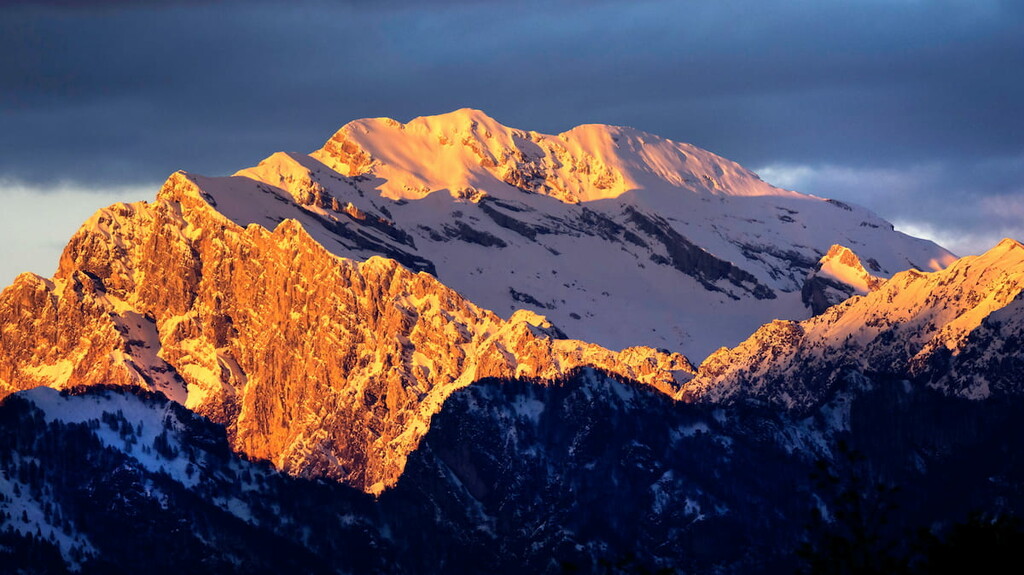
Administratively these mountains belong to six provinces in three regions: Trento (Trentino / South Tyrol), Verona, Vicenza, Treviso and Belluno (Veneto), and Pordenone (Friuli Venezia Giulia).
When you take a Trenitalia train through northeastern Italy from Verona to Venice, your journey will be accompanied by the Venetian Prealps, which you can see out the window on a nice day. You can also take Trenitalia trains to get directly into the range from Venice, so long as you travel north toward Padua or Treviso.
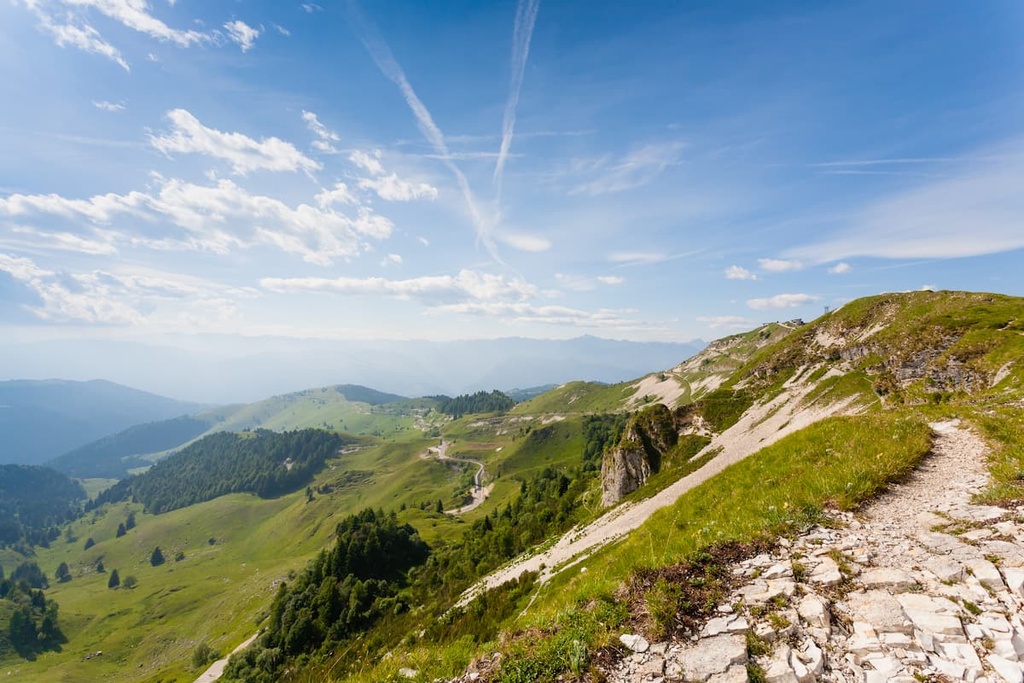
If you travel north from Venice through Treviso and continue toward the mountains, you’ll eventually go straight through the UNESCO Prosecco Hills, which are famous because of the white sparkling wine that’s produced from their grapes. From here, if you’re driving, the road will wind along the Pieve River as you head closer toward the Alps proper.
Note that the easiest and fastest way to get to this part of Italy is by plane. Venice, Verona, and Treviso are all home to major airports in Italy, so they are relatively easy to get to if you are coming from further afield. Alternatively, if you are coming from the north or east, you can easily get to the Venetian Prealps by car, train, or bus from Austria and Slovenia.
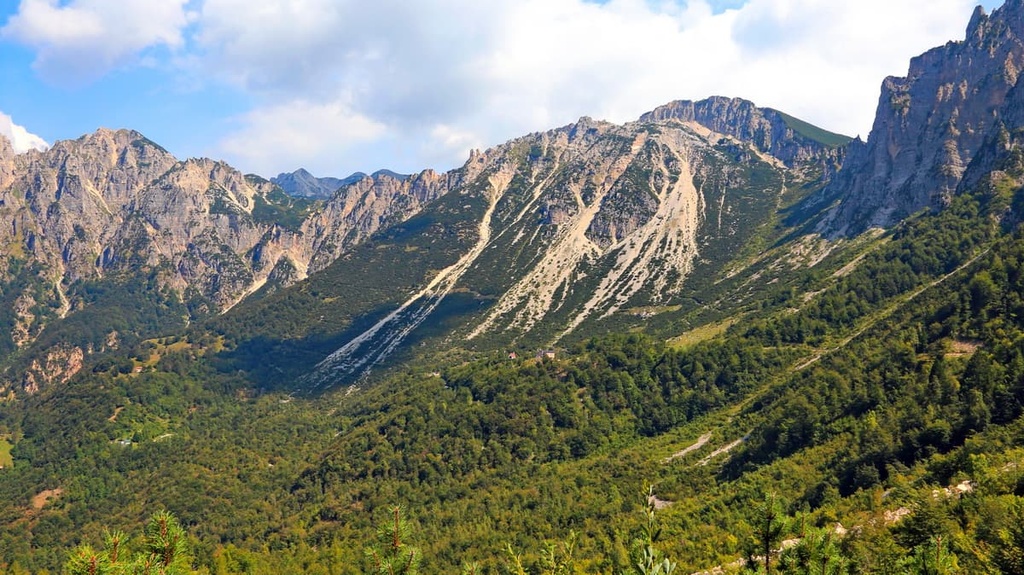
The geology of the Venetian Prealps is very diverse, so, given the large size of the range, we will discuss just a portion of it here.
In the western part of the range, a clear geological distinction can be made between its two groups: Monti Lessini and Piccole Dolomiti.
Monti Lessini consists of limestones of various types (marly limestones of the Jurassic period, micritic limestones of the Cretaceous and Upper Jurassic periods, and limestones from the Jurassic period).
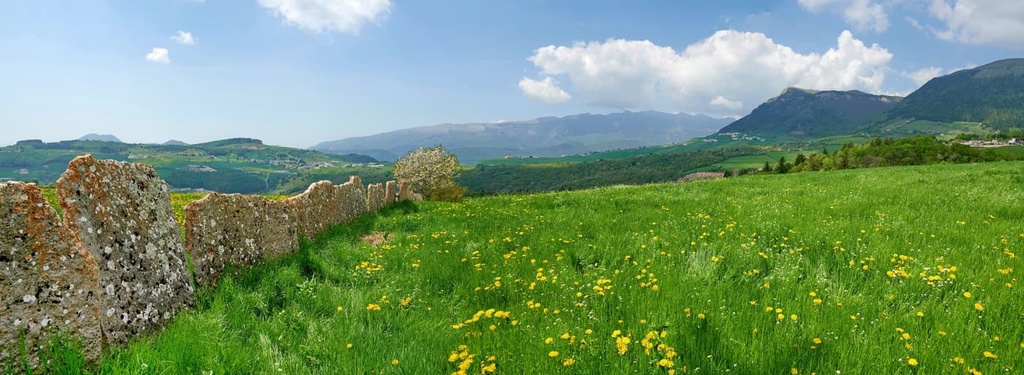
Meanwhile, the Piccole Dolomiti, as their name implies, consists of dolomite from the Triassic period. Furthermore, to the southeast of Piccole Dolomiti itself, there is a broader area of volcanic rocks, namely alkaline basalts of the Miocene period.
We can also see these differences in the landscapes of these two groups. For example, the slopes of Monti Lessini are more gentle, while in Piccole Dolomiti, one can find many elements of what the main Dolomite range is famous for, namely deep canyons, vertical walls, pinnacles and cliffs, and simply unusual rocks.
However, Monti Lessini also has something to surprise the traveler. Because of its soft limestone rocks, the range is home to many typical karst formations, like sinkholes, windows, arches, and the like.
The Venetian Prealps are one of the main mountain ranges in the Southern Limestone Alps or Southeastern Alps (depending on the classification system used) of the greater Alps.
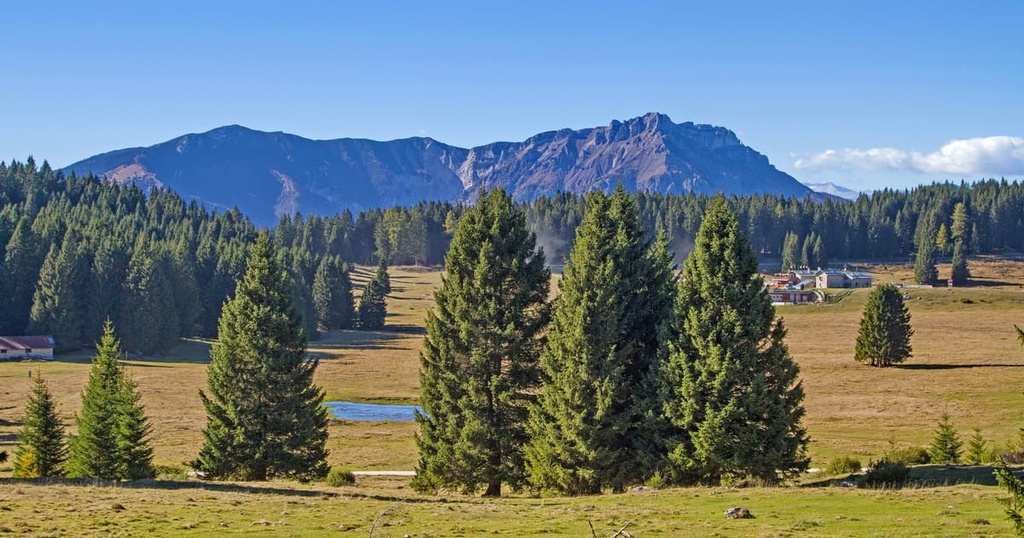
If we use the Italian SOIUSA classification system for the Alps, the Venetian Prealps are range number 32. Within this subrange, there are about 10 smaller groups with their own unique features, which are listed below.
Vicentine Alps (Prealpi Vicentine)
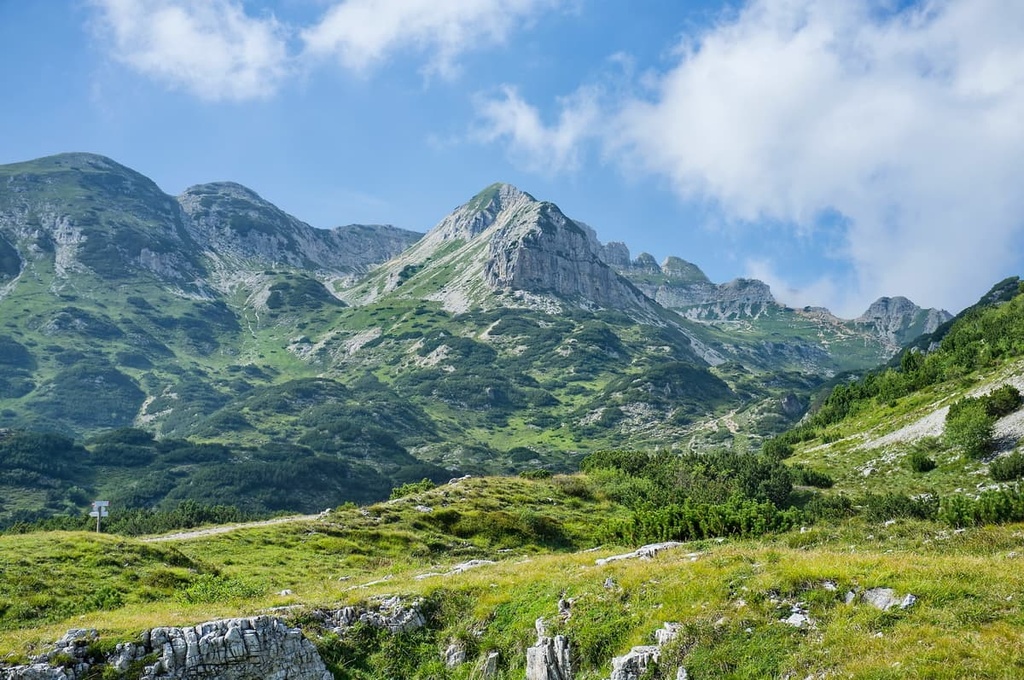
Belluno Prealps (Prealpi Bellunesi)
The Treviso Prealps (Prealpi Trevigiane) are a long mountain group that stretches from southwest to northeast between the Prosecco Hills (Colline del Conegliano e Valdobbiadene). They, alongside the Valbelluna Valley, are also home to some incredible peaks that are worth checking out.
According to the second common classification of the Alps from the German-Austrian Alpine Club (AVE), the Venetian Prealps do not exist. Or rather, on the AVE map, they are part of the Vicentine Alps (Italian: Prealpi Vicentine, German: Vizentiner Alpen), which is number 54 in this system.
But the Vicentine Alps include only the mountains in the western part of the range. The central and eastern parts of the Venetian Prealps (as defined by SOUISA) are referred to here as the southernmost areas of the Dolomites and Southern Carnic Alps, respectively. Another interesting detail is that within the Dolomites, AVE also identifies Monte Grappa as a separate group.
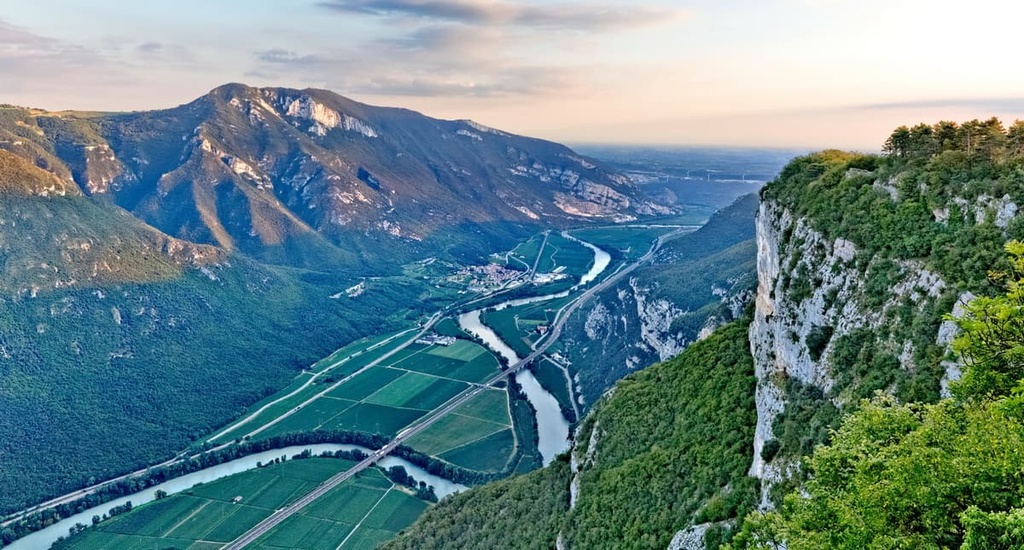
The Venetian Prealps have dozens of interesting, and, of course, just beautiful peaks. The most important and famous peaks in the range are as follows:
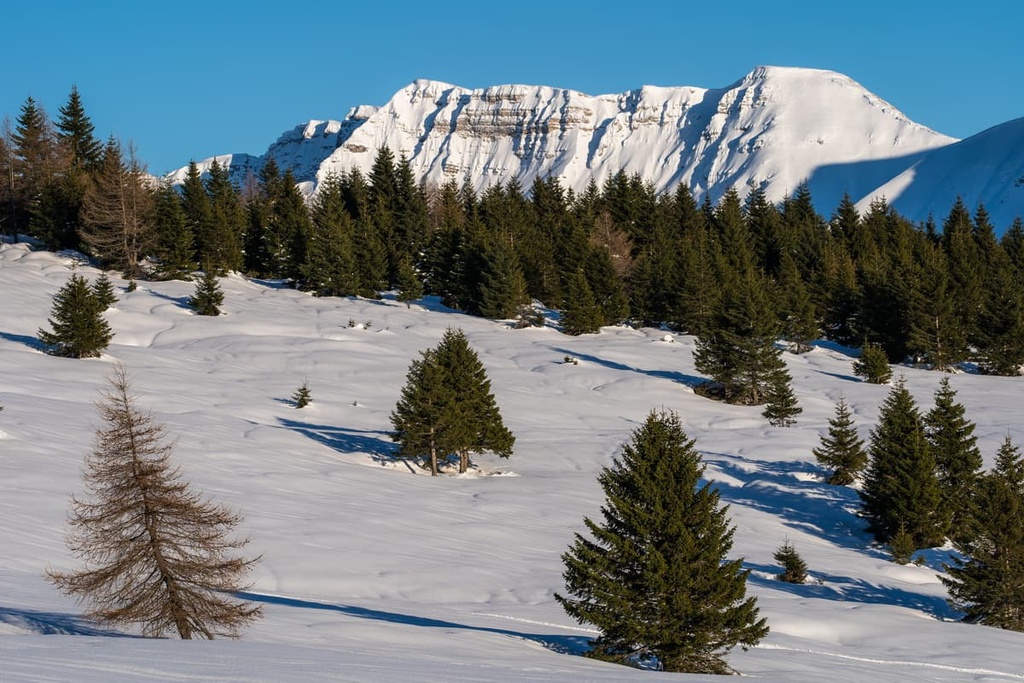
There are countless opportunities for hiking in the Venetian Prealps. Some of the best hiking areas in the range include:
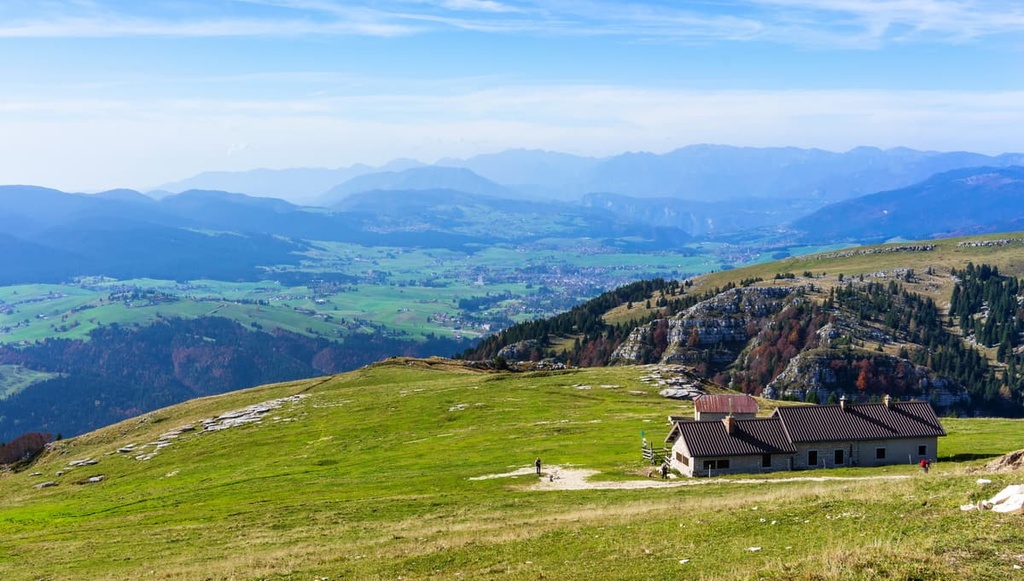
During the winter months, the Venetian Prealps are a great place for skiing, snowboarding, snowshoeing, and other snow sports. There are a huge number of ski resorts in the range, the largest of which are:
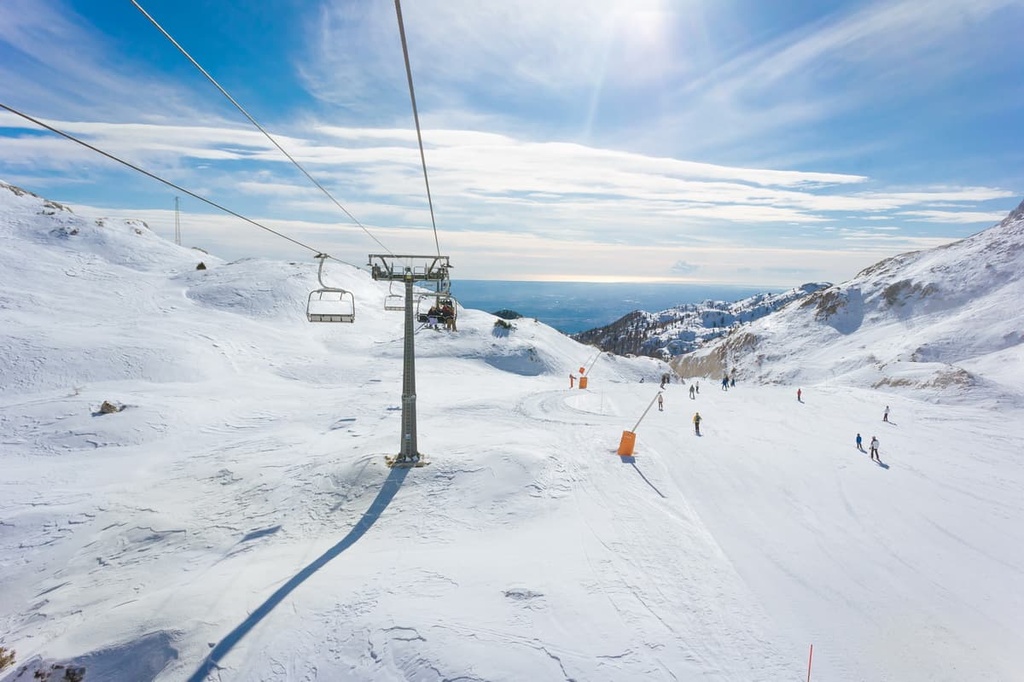
You can learn more about these and other ski resorts in the Trentino-Alto Adige/Südtirol, Veneto, and Friuli Venezia Giulia regions of Italy at the World Mountain Lifts section on PeakVisor.
If you want to learn more about the Venetian Prealps, check out the official tourist websites for each of the range’s three regions: Veneto.eu, VisitTrentino.info, and PromoTurismo.fvg.it.
Before and during your trip to the range, you can also visit one of the many official tourist offices that are located in the region’s major cities. For example, you can find tourist offices in places like Trento, Verona, Venice, Vicenza, Padua, Treviso, and Pordenone.
The same is true of many of the range’s small towns. For example, there is a nice tourist office in Feltre. It is located right in the town's central square at Piazza Vittorio Emanuele II, 21.
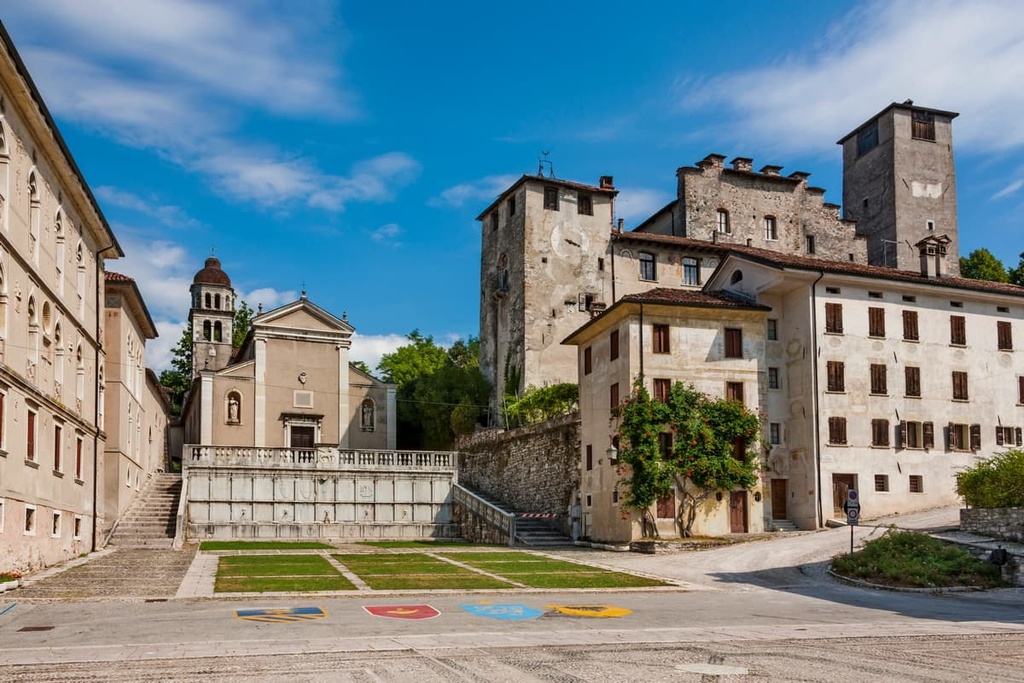
The exact name of the town in Italian is Ufficio Turistico di Feltre—Consorzio Dolomiti Prealpi. You can also contact the center by phone at +3904392540 or you can visit the official tourist site of the town: VisitFeltre.info.
For more information, you can check out the tourism website of the town of Asiago (Asiago.to) or you can head to the official Prosecco Hills website (VisitProseccoHills.it) to learn more about this incredible UNESCO World Heritage Site.
When hiking in the Venetian Prealps, you can stay in one of the three main types of accommodation: mountain huts (rifugio), free Alpine bivouacs (bivacco), or campsites (campeggio).
For example, if you go to the highest peak of the range, Cima Dodici, which is located very close to the town of Borgo Valsugana, at the very foot of the summit you will find the bivacco Busa delle Dodese, which has 6 beds. In this area, you can also find Baito di Bivio Italia and bivacco Bordignon, both of which are very rustic accommodation options for up to 3 hikers.
Among the mountain huts that you’ll find in the region, there is the rifugio Larici da Alessio, which is located near the summit of Cima Portule (2,310 m / 7,578 ft).
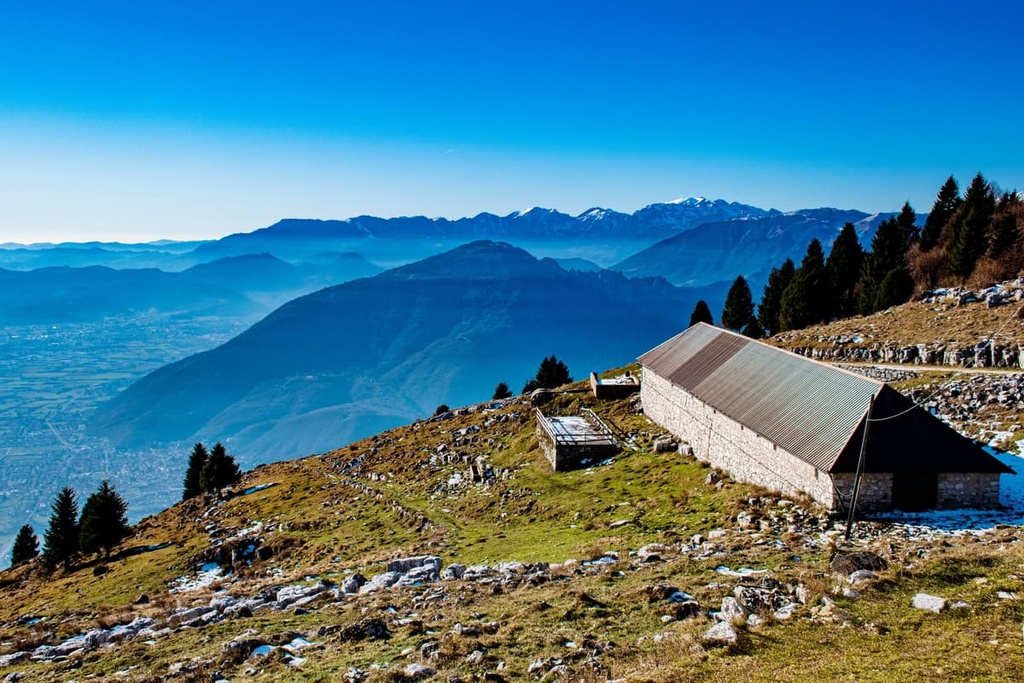
If you’re looking for in-town accommodations in the region, you can find hotels like Garnì Sella al Cipriani Hotel and Tre Faggi Hotel or B&Bs like La Tana del Lupo B&B and Piagaro Borgo Valsugana B&B. There are also many rental apartments available in the region.
As far as camping goes, some of the best campgrounds include Camping Valmalene, Camping Punta Indiani, Camping Valmalene, and Farms & Agricampeggio “Montibeller Valter.”
Before and after your hike, you can also easily find a variety of accommodations in nearly any village that’s located within the Venetian Prealps. Even seemingly small communities have some sort of accommodation available, so there’s no shortage of places to stay in the area.
There are plenty of excellent cities and towns to check out in the Venetian Prealps and the surrounding area, many of which are quite famous, like Venice, Treviso, Belluno, Trento, and Verona.
Traveling by train between these towns and cities is a great way to see the area, but it's even better to get up close to the mountains. The main towns on the southern borders of the range are (from west to east): Bardolino (very touristy in summer), Schio, Bassano del Grappa, Valdobbiadene (the capital of Prosecco Hills), and Vittorio Veneto.
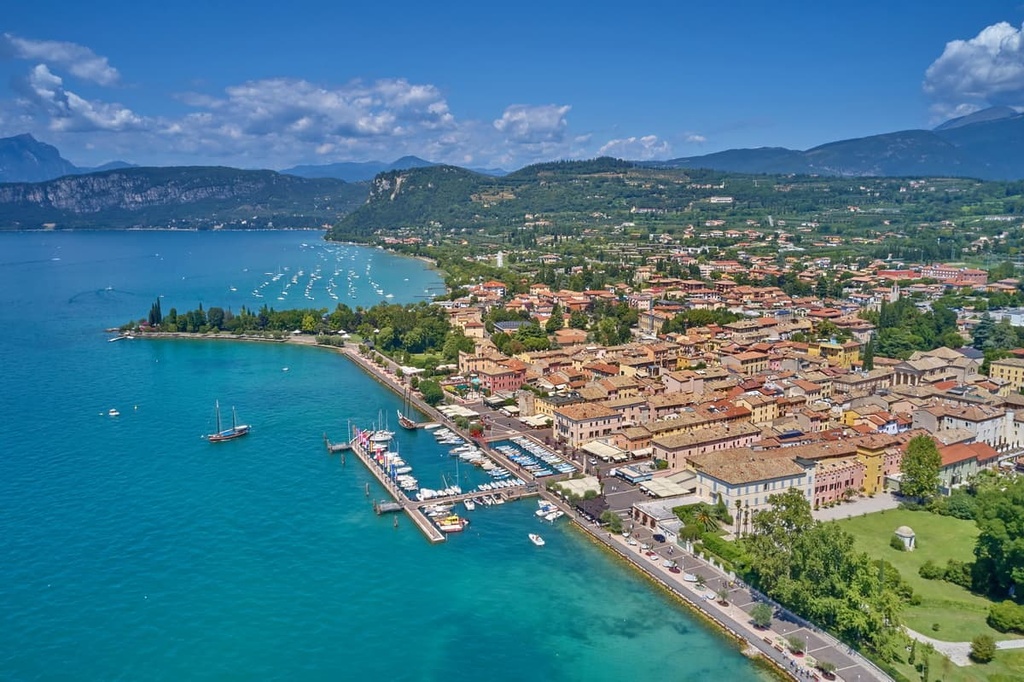
But an even better way to see the region is to go deep into the mountains where you can experience them first-hand. For example, you could head to Asiago, which offers beautiful panoramic views of the most prominent mountain of the range, Cima Dodici (2,336 m / 7,664 ft).
An excellent and little-known town in the eastern part of the range is Feltre, which is located at the foot of Monte Grappa. From Feltre, you can see the mountains in the Dolomiti Bellunesi National Park, as well as the nearby town of Arsie on the beautiful Corlo Lake.
Another great and quiet town here is Sant'Antonio Tortal, which is located in the Prealps of Treviso between Passo San Boldo and the Valbelluna Valley.
The main towns on the northern borders of the western part of the range are Rovereto, Levico Terme, and Borgo Valsugana in Trentino. These are quite large resorts as well, but still less noisy when compared to Venice and Verona.

Explore Venetian Prealps with the PeakVisor 3D Map and identify its summits.








